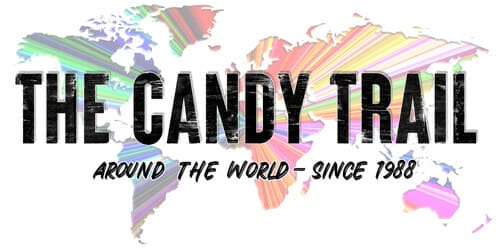It’s called the “Smoking” canyon – but there’s no fire, cigarettes, or ganja in sight … It’s just water.
But a-hell-of-a-lot of water!
Yes, a thundering cascade of H2o, better known as the Victoria Falls.
VIDEO: Devils’ Pool at Victoria Falls
NOTE ON THE VIDEO: Amid the thunder and smoke, a group enjoys Devil’s Pool at Victoria Falls on the Zambian side. Often, youth tour groups come to the Falls to tick off bucket-lists such as bungee, rafting, elephant safaris, booze cruises, etc.
Is Victoria Falls worth seeing in the dry season?
Simply, YES.

While Angel Falls in Venezuela is the world’s highest waterfall and Iguassu in Brazil and Argentina are the widest – I’ve visited them both; yet, it’s Victoria that earns the super-heavyweight title: ‘The Largest Waterfalls in the World’.

When is the best time to visit Victoria Falls in Zimbabwe?
The dry season means you can see bare cliffs and the full extent and depth of the canyon.
Also, this is the only time that it’s safe to dip into Zambia’s Devil’s Pool on the opposite side.
However, the wet season offers the Falls in its wild rushing water-clouded best; yet the waves of ‘smoking’ waters often obscure the view.

GEEK SPEAK: Having a 1708 meter width and height of 108 meters results in the world’s largest sheet of falling water, averaging a flow of 1088 m³/second!
So, even visiting the Falls at the beginning of the dry season, I can vouch for their intensity.
Yes, there’s still a lot of water.
Enough for a long shower with a loved one, for sure.
And for a cup of tea or two.
Facts about the Victoria Falls
Firstly, let’s set the record straight: Africans have lived around Victoria Falls for ever and indigenous names translate as “The Smoke That Thunders”.
On the Zimbabwean side today, it follows the colonial name: Victoria Falls.
Yet, on the Zambian side, the indigenous name ‘Mosi-o-Tunya‘ rules.

Africans have been aware of the Falls since the birth of humankind, I assume, yet Europeans were slower in their “discovery”.
You know the name David Livingstone – yes?
Well, he put these Falls on the map.
Livingston encountered the waterfalls on 17th November 1855 (on his journey from the upper Zambezi to the mouth of the river).
And while other explorers—including Arab traders—were aware of them before Livingstone, he named them after Great Britain’s queen.

Travel tips for visiting the Victoria Falls
Getting to Victoria Falls is easy – and adventurous.
Go by an overnight train from Harare.
Otherwise, there are flights.
Or better, get a hire car and include a journey to nearby Chobe National Park in neighboring Botswana (I hitched with a friend coming up from South Africa via Namibia on a road trip).
Once in Victoria Falls town, you have many accommodation options, and the walk from the town to the Falls is pleasant and easy.

Tickets cost $40.
BUT they’re only good for one entry on the Zimbabwean side (in 2013).
So chose your timing, morning or afternoon.
OR you will pay again for any additional entries, including another inflated fee to visit during a full moon evening.
When I crossed the border to Zambia and went into the town of Livingstone, I decided not to visit the waterfalls on the Zambian side.
Why?
Well, I believe the view is not as encompassing or spectacular.
Also, it meant yet more steep ticket fees to enter their National Park and then extra fees for a compulsory tour guide to visit the Devil’s Pool (and I’m at the end of an Africa overland trip from Cairo to Cape Town, running low on cash, and so will keep that perspective for next time).

Travels in Zimbabwe – 2013


